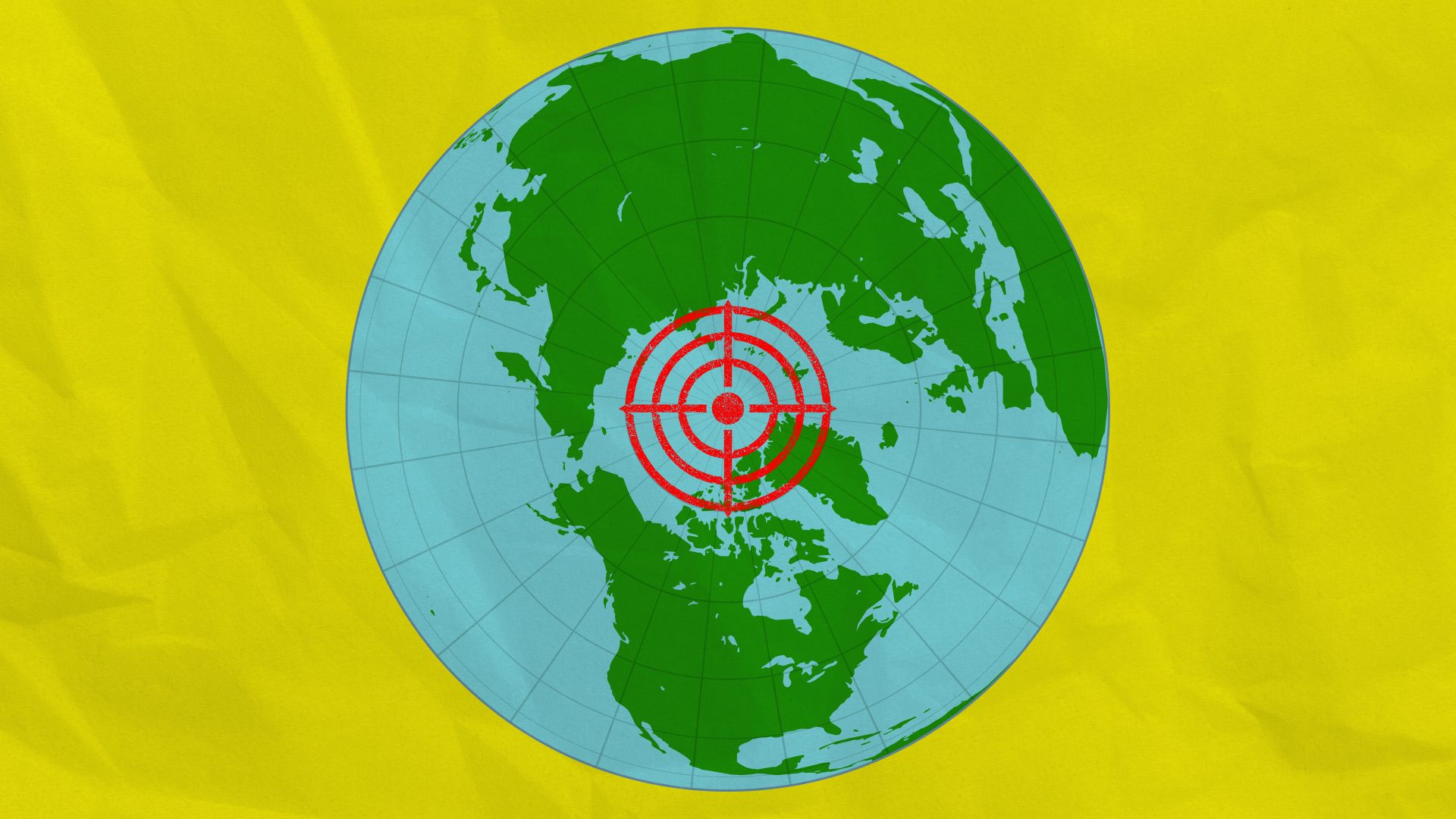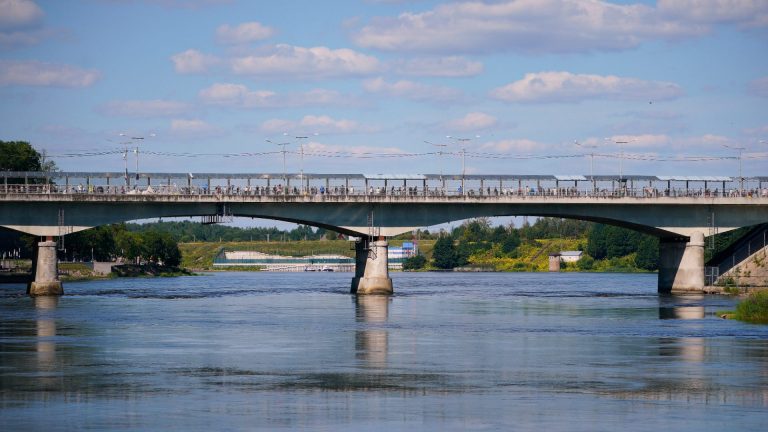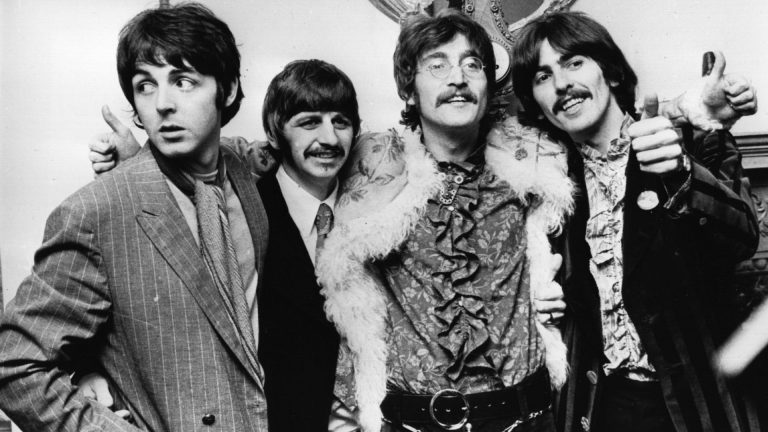The remote Arctic has been sucked into the orbit of Vladimir Putin’s disastrous war in Ukraine, with Western officials warning that Russia is building up its military strength in the region as the ice melts and reveals rich resources and new shipping routes.
At the end of August, on a visit to the Canadian Arctic, NATO Secretary General Jens Stoltenberg said Russia’s capabilities in the High North constituted a strategic challenge for NATO because of a significant Russian military build-up and the creation of a partnership between Russia and China in the region.
“Russia has set up a new Arctic command,” he said. “It has opened hundreds of new and former Soviet-era Arctic military sites, including airfields and deep water ports. Russia is also using the region as a test bed for many of its new novel weapon systems.”
The Arctic is a fragile space and is subject to the vagaries of climate change – the Arctic Sea is melting and the ice sheet over Greenland is disappearing fast. This strategic space at the top of the world has the potential to connect the Atlantic and the Pacific and offers the shortest and most direct routes for a nuclear exchange between the US and Russia should Putin, as he has threatened to do in Ukraine, cross that threshold.
With some experts predicting that the Arctic could be ice-free by 2040, the exploitation and extraction of its oil and gas wealth as it warms makes it indispensable to the future of global energy security for sanctions-hit Russia, China, and Europe.
After years of relative disinterest in the region, or what has been termed ‘polar apathy’, the United States is now burnishing its Arctic credentials. In August, the Senate announced substantive initiatives for the Arctic, including a proposed bill covering national security, shipping, research, and trade. It rejected any notion of a Russian monopoly and promised to establish an ‘all year’ presence in the region.
This proposed Arctic Commitment Act calls for significant investment in both research and infrastructure, most notably through the development of deep-water ports in the American Arctic (Alaska) as well as scientific cooperation with other Arctic states – excluding Russia. The bill challenges Russian designs to have absolutist control of the Northern Sea Route, (NSR) a vital shipping route along the Arctic coastal rim from the Bering Straits to the Barents. It is expected over the longer term that the NSR will be increasingly ice-free for some parts of the year. While the prospect of a busy commercial route is still years away, the NSR does offer Russia the ability to export raw materials to China and sustain that vital economic relationship as sanctions bite.
Russia has long claimed that the NSR is an internal issue but the US bill requires a report to be produced by the Department of Transportation on opposing the control and influence of Russian shipping: pushing back at restrictions imposed by Moscow on foreign shipping traversing the NSR. This raises the issue of the right of freedom of navigation across Arctic waters, a question that also preoccupies Canada and the current and future management of the Northwest Passage (NWP).
Meanwhile, China wishes to exploit the riches of the Arctic to bolster its own appetite for hydrocarbons and there is a longer-term strategy to invest in Arctic oil and gas – hence the energy deals with Russia and the investment in natural gas fields. The close relationship with Russia, which is pragmatic as well as ideological, benefits the Chinese economy and increases its reach into the Arctic. The Northern Sea routes to the north of Siberia may eventually permit China to cut shipping times from Europe. A transpolar route would in theory be approximately 30% shorter than through the Malacca Straits or the troublesome choke points of Suez or navigating the hazards of East Africa. But in the short term, the NSR is likely to be of most value in facilitating Chinese need for Russian energy resources and Moscow’s need for finance.
Arctic politics were relatively harmonious in the decade after the Cold War and inspired the creation of the Arctic Council in 1996. That forum engendered sustained dialogue between Russia and the other Arctic states with cooperation on a host of issues from ‘Search and Rescue’ to the rights of Indigenous peoples. It expressly avoided any discussion of hard security issues or the thorny issues of military and defence politics.
But now that very symbol of regional cooperation has had its activities paused. The Western (soon to be ‘NATO’) Arctic 7 have refused to meet with Russian counterparts because of Ukraine. It is unclear if or when normal business will resume as Western states seek to contain the expansionist designs of the Kremlin through sanctions and the further extension of NATO membership to include the traditionally non-aligned states of Sweden and Finland. This will strengthen the northern flank but has already increased tensions along the new longer NATO border with Russia.
In fact, tensions at the top of the world predate Russia’s invasion of Ukraine: Over years there has been persistent probing of the resolve of NATO allies in the High and wider North. NATO has responded with an uptick in the number of military exercises both in the Arctic and Baltic regions. The massive Operation Trident Juncture in 2018 was NATO’s biggest war games in Norway since the 1980s.
In 2019, former President Donald Trump famously offered to buy Greenland and there had been an upgrade from 2017 of the US military presence at Keflavik in Iceland. This included the operation of Poseidon reconnaissance planes to track Russians activities in the Arctic but also in the Greenland, Iceland UK Gap (GIUK Gap). This was in response to the remilitarisation of the Russian Arctic and the Kremlin’s renewal and investment in military infrastructure across its Arctic islands, as well as on the Kola Peninsula, in north west Russia. It is, however, under President Joe Biden that we have seen deeper engagement. Along with the raft of activities since the spring, there was the announcement in August of the creation of the post of US Ambassador at Large to the Arctic.
Until now, the US was the only member not to have ambassador-level representation at the Arctic Council. The Department of State has a coordinator (previously a Special Representative) for the region but that office, comprising four people, does not represent the US at the Arctic Council itself. It is now recognised that higher-level representation is urgent as with relations frozen with Moscow, there could be a reappraisal of the guiding documents which laid the framework for the Council.
Other measures on Arctic affairs are coming thick and fast. There is, for example, a suggestion that the US should finally ratify the United Nations Convention on the Law of the Sea (UNCLOS) after years of delay. Once again, this debate has been overtaken by the effects of climate change which, as critics of UNCLOS point out, means that oceans and boundaries are in constant flux. More pertinently, Article 234 of UNCLOS created a special status for ice-covered waters, which permits coastal states to adopt and enforce non-discriminatory laws for vessels moving across ice-covered areas. Just what will constitute “ice-covered waters” in a melting Arctic will inspire considerable debate.
One issue in this new age of American assertiveness is how rhetoric will be bolstered with actual capabilities. Icebreakers are indispensable to a strong projection of power and effective action and the US only has two, with one having been in service since 1976. The Russian icebreaker fleet stands at 53, some 11 of which are nuclear-powered. China has indicated that it will construct the world’s largest icebreaker, signifying its obvious appetite for deeper engagement in polar politics. People are noticing; in his recent visit to the Canadian Arctic – the first by a NATO secretary general – Stoltenberg also referenced China’s ambitions.
“It is investing billions of dollars in energy infrastructure and research projects in the high North,” Stoltenberg said. “Beijing and Moscow have also pledged to intensify practical operation in the Arctic. This forms part of the deepening strategic partnership that challenges our values and our interests.”
There is for now little evidence of the exercise of hard military power by China: it remains a cooperative member of Arctic Council working groups while promoting the region as a global common in which all are welcome. Beijing has, however, sought to use its considerable soft power to pursue an “Arctic silk road” or “Arctic Belt and Road”. This includes attempting to purchase or build infrastructure in Greenland, a country rich in raw minerals.
In 2016, the Chinese mining company, General Nice Group, tried to buy an abandoned naval base in Greenland. This venture like others, such as the offer to build and renew the airport outside Nuuk, were blocked by the Danish government. The airport idea was scrapped following American pressure on Copenhagen. Despite this, Chinese investment accounted for 12% of Greenlandic GDP with investment primarily in rare mineral extraction in the five years before 2017.
It is uncertain how long Chinese investments in infrastructure can be blocked. On a recent trip to Greenland, the rising tide of nationalism and frustration with its tutelage to Denmark was obvious. There have been a series of calls for both independence and Greenlandic representation within NATO. The melting of the Arctic has also placed a sharp focus on the exploitation of uncovered resources as well as shining a light on issues of historical inequality. Endemic poverty and poor health in Greenland raise questions of social justice, as well as raising the prospects for non-Arctic states to intervene and influence in troubled times.
The relationship between China and Iceland (a founding member of NATO) shows how Beijing has gained influence but also how Iceland has benefitted – something that Greenland might emulate. After the 2008 financial crisis, Chinese investment rescued the fragile Icelandic economy. This was followed by a series of initiatives, such as the establishment of a Chinese Northern Lights research facility in 2016 and the signing, two years later, of a $250 million deal to provide Beijing with geothermal expertise. Despite this, Iceland has permitted the military build-up at its Keflavik base and signalled its solidarity with NATO allies. Given that the US Air Force has announced a new Arctic strategy, Iceland will become important in terms of its geopolitical position at the entrance to the European Arctic.
But it is not just the eight Arctic states who are flexing their muscles in the region. India, Turkey, and South Korea are increasingly engaged with the Poles. India initiated its Arctic Research programme in 2007 and in 2008 inaugurated its Himadri research station on Svalbard in Norway. An observer at the Arctic Council, India’s scientific community asserts a link between Arctic climate change and monsoons, pointing to the common elements linking the Arctic, the Antarctic and the so-called “third Pole” – the Himalayas.
Indeed, it is the scientific credentials of a state that permit entry into the Arctic Council. Science and research are crucial to any understanding of the changing Poles. In this respect the sanctions on Russia have profound consequences. Since its invasion of Ukraine, there has been a collapse in funding for research collaboration with Russian scientists and social scientists.
In this age of climate change, it will be daunting to work on Arctic affairs without the state that holds more than 50% of the Arctic coastline. Long-term monitoring of permafrost, for example, depends upon access to Russian-based data. A vast knowledge gap has been created for Western states and Beijing is surely the beneficiary.
This should concern us all. The Arctic is no longer frozen, no longer remote and no longer harmonious.
Caroline Kennedy-Pipe is a professor of war studies at Loughborough University









